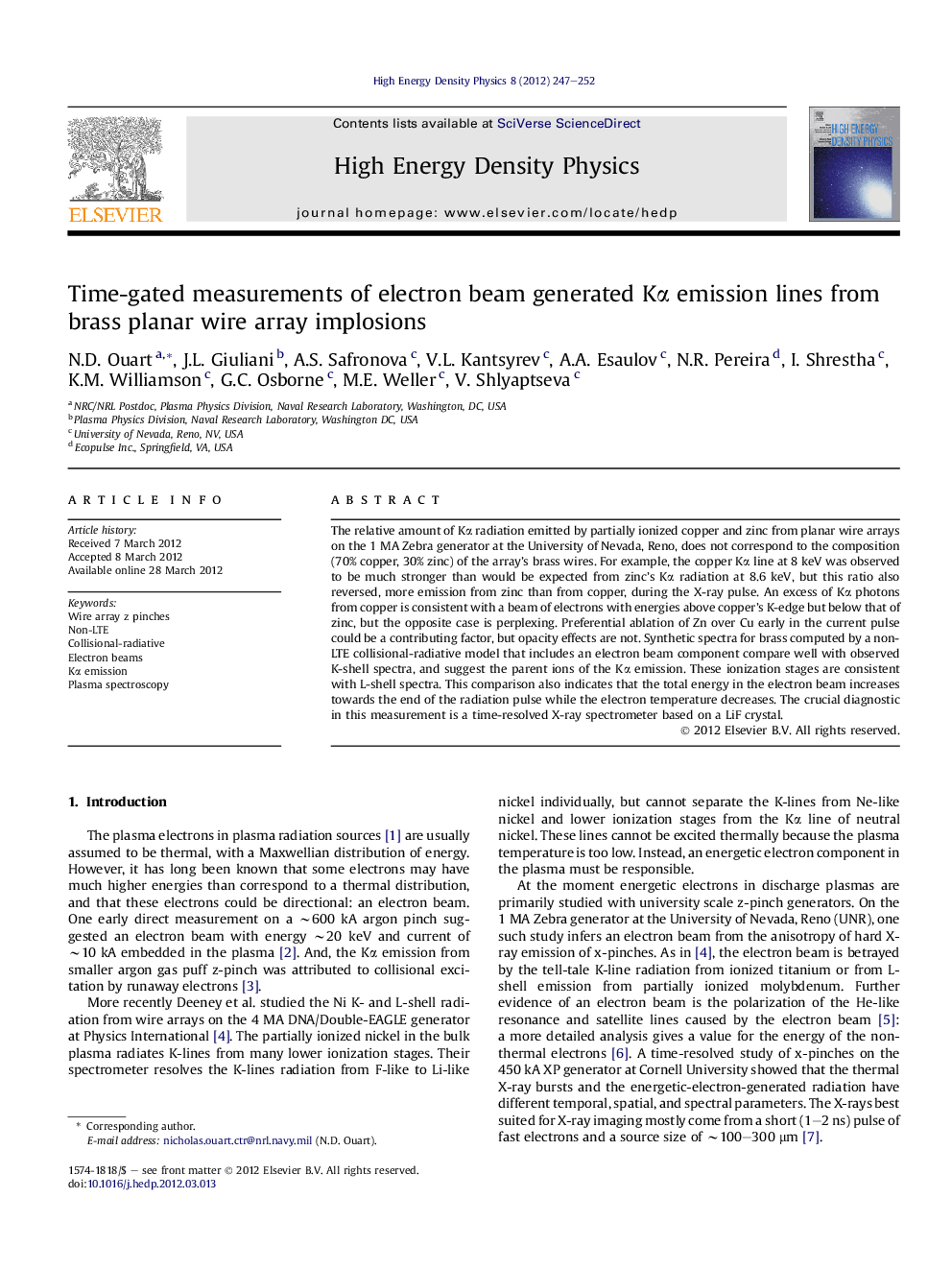| Article ID | Journal | Published Year | Pages | File Type |
|---|---|---|---|---|
| 1772576 | High Energy Density Physics | 2012 | 6 Pages |
Abstract
The relative amount of Kα radiation emitted by partially ionized copper and zinc from planar wire arrays on the 1 MA Zebra generator at the University of Nevada, Reno, does not correspond to the composition (70% copper, 30% zinc) of the array's brass wires. For example, the copper Kα line at 8 keV was observed to be much stronger than would be expected from zinc's Kα radiation at 8.6 keV, but this ratio also reversed, more emission from zinc than from copper, during the X-ray pulse. An excess of Kα photons from copper is consistent with a beam of electrons with energies above copper's K-edge but below that of zinc, but the opposite case is perplexing. Preferential ablation of Zn over Cu early in the current pulse could be a contributing factor, but opacity effects are not. Synthetic spectra for brass computed by a non-LTE collisional-radiative model that includes an electron beam component compare well with observed K-shell spectra, and suggest the parent ions of the Kα emission. These ionization stages are consistent with L-shell spectra. This comparison also indicates that the total energy in the electron beam increases towards the end of the radiation pulse while the electron temperature decreases. The crucial diagnostic in this measurement is a time-resolved X-ray spectrometer based on a LiF crystal.
Related Topics
Physical Sciences and Engineering
Physics and Astronomy
Astronomy and Astrophysics
Authors
N.D. Ouart, J.L. Giuliani, A.S. Safronova, V.L. Kantsyrev, A.A. Esaulov, N.R. Pereira, I. Shrestha, K.M. Williamson, G.C. Osborne, M.E. Weller, V. Shlyaptseva,
